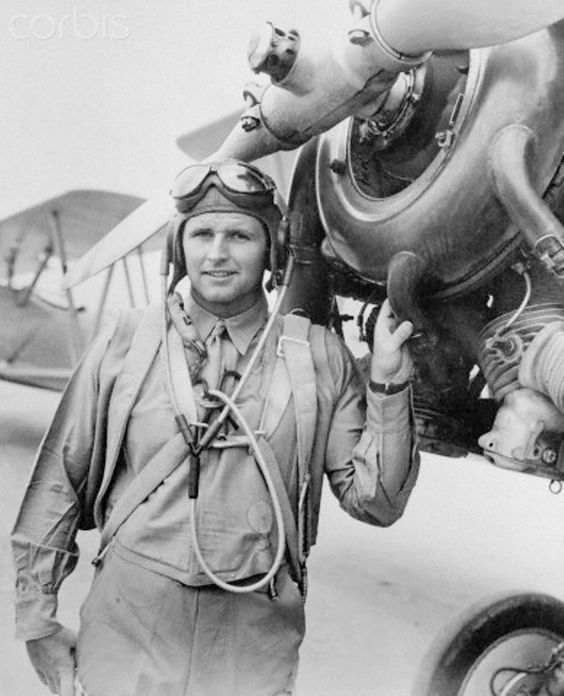Thursday 17 July 1941
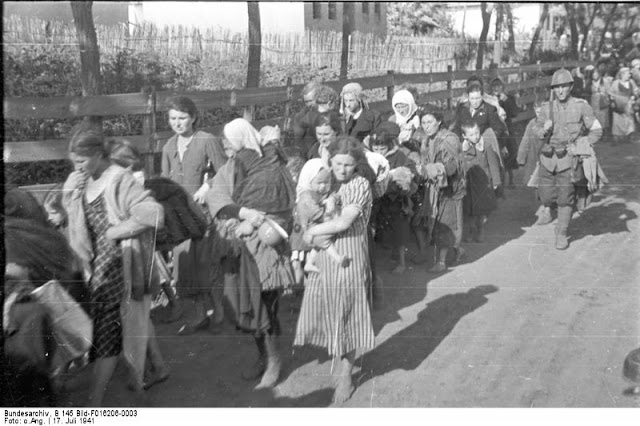 |
| Deportation of Jewish women ("repatriated" according to the original caption) in captured Russian territory. Note the Romanian guard on the right. 17 July 1941 (Federal Archives, B 145 Bild-F016206-0003). |
In the Far North sector, Finnish General Talvela continues pushing his VI Corps forces into Karelia along the east coast of Lake Ladoga. The Soviet respond by sending reinforcements to the threatened area. On the west coast of the lake, Soviet defenses have been giving Finnish VII Corps more trouble, but today the Finns finally reach the Jänisjoki River. They have surrounded Soviet formations, just as they did during the Winter War, and now spend some time subduing them.
In the Army Group North sector, the Soviet 11th Army and 27th Army counterattack the Germans and slow them down.
In the Army Group Center sector, the German forces continue battling Soviet troops in the suburbs of Smolensk (they already control the center). The German Panzer Groups 2 and 3 have virtually surrounded the city (their pincers are still dozens of miles apart), but they do not have the infantry in place to seal a perimeter. Thus, Soviet troops continue to retreat through German lines and through the gap. General Hoth's Panzer Group 3 attacks in the direction of Velikiye Luki.
In the Army Group South sector, the German XI Army Corps (Infantry General (General der Infanterie) Joachim von Kortzfleisch) crosses the Dneipr River. Romanian Third Army crosses the Dniester River, and Romanian Fourth Army continues heading toward Odessa. The Germans complete an encirclement at Uman, trapping roughly 300,000 Soviet troops.
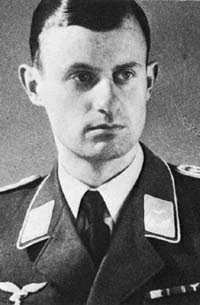 |
| Oberleutnant Hans Kolbow is shot down on 17 July 1941. |
 |
| German soldiers across the Dniester River, examining a Soviet bunker, 17 July 1941 (Federal Archive, B 145 Bild-F016206-0039A). |
After dark, RAF Bomber Command raids Cologne with 50 Wellingtons and 25 Hampdens. All of the planes return safely. Cologne authorities report no casualties and no serious injuries. A diversionary raid is sent against Rotterdam, but the weather is poor and the five bombers fail to find the target. On the way back, the Luftwaffe shoots one down.
After dark, the Luftwaffe raids Hull, Yorkshire. It is a successful raid, killing 111 and wounding 108 people. In addition, there are 180 fires that make 3500 people homeless.
RAF ace James Lacey shoots down a Luftwaffe He 59 seaplane. The Luftwaffe uses the planes for rescue operations, but due to various "incidents" during the Battle of Britain flowing from British Air Ministry Bulletin 1254 making them fair targets, the Germans now fly them armed and camouflaged, usually with fighter escort.
 |
| German soldiers and a Panzer III. 17 July 1941. |
Royal Navy submarine HMS Thrasher badly damages 129-ton French fishing trawler Virgo Fidelis off San Sebastian. The master runs the trawler aground to prevent sinking, but it is a total loss.
British 198-ton fishing trawler Ben Glamair sinks near Dunstanburgh from unknown causes, perhaps a mine.
British 91-ton drifter Fertile Valley collides with another ship in the River Tay and sinks.
The Luftwaffe bombs and damages 481-ton British freighter Emerald Queen off Saltburn-by-the-Sea. It is towed to Hartlepool.
Convoy OB-348 departs from Liverpool bound for Halifax.
Royal Navy corvette HMS Narcissus (Lt. William G. H. Bolton) is commissioned.
US Navy destroyer USS Ingraham (William M. Haynsworth, Jr.) is commissioned.
U-579 (Kapitänleutnant Dietrich Lohmann) is commissioned, U-449 is laid down, U-487, U-488, U-489, and U-490 are ordered.
 |
| German and Romanian troops and tanks (Panzer 35(t)) entering into Chișinău (Bessarabia), 17 July 1941. |
Dutch submarine O-23 submarine torpedoes and damages 5479-ton Italian freighter Maddalena Odero south of Lampione (Lampedusa), Italy. The Maddalena Odero was en route from Naples to Tripoli with munitions. The ship's master beaches the ship at Cala Croce on Lampedusa to prevent it from sinking, but after subsequent RAF attacks, it is a total write-off. Dutch sources place this attack on 17 August 1941 and not 17 July, and the August date does seem to be the correct one, but it is placed here just in case and for those brought here by the apparently incorrect date.
The Luftwaffe (Junkers Ju 87 aircraft of Lehrgeschwader 1) bombs and badly damages Royal Navy landing craft tank HMS LCT 10 off Sidi Barani. It is taken under tow, but sinks.
RAF No. 830 Squadron based on Malta raids Tripoli and damages 6212-ton Italian tanker Panuco. Unable to unload its cargo due to damage, it heads back to Palermo, then Naples for repairs.
The Luftwaffe raids Tobruk.
At Malta, there is a minor bombing raid before dawn on Fort St. Angelo. Around 11:30, an air battle surrounding an Italian reconnaissance SM-79 leads to two Italian Macchi 200 fighter losses and one Hawker Hurricane loss.
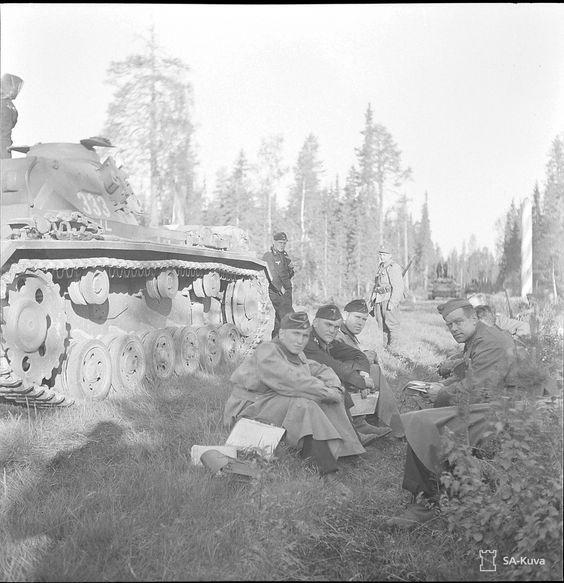 |
| Soldiers beside a Panzer III in Finland/Karelia, 17 July 1941 (SA-Kuva). |
Partisans: The uprising in Montenegro continues. Captain Pavle Đurišić leads a successful attack of communist insurgents on Berane. The Italians, caught by surprise, continue assembling forces for a counterattack.
Spy Stuff: The Italian Navy, Regia Marina, introduces a new cipher that for the time being leaves the British Ultra cryptographers at Bletchley Park baffled.
POWs: The Orthodox Bishop of Dresden visits the Oflag IV-C prisoners of war camp at Colditz Castle.
 |
| "Mrs. A E Lawrence talking to a sailor on board the ship where she is working. Mrs. Lawrence has five sons, one of them is a fitter. Her husband is serving in the Navy." July 1941. © IWM (A 4510). |
The Wehrmacht plans to deploy the unit, categorized as the 250th Infantry Division, in the Army Group North sector. It is an irreverent lot, with men of all ranks disdaining military protocol, but the Spaniards have excellent morale and believe themselves unbeatable.
US/Japanese Relations: US President Franklin Roosevelt and Secretary of State Cordell Hull meet with Japanese Ambassador Kichisaburo Nomura in Washington DC. They discuss ways to resolve conflicts in the Pacific.
 |
| Lieutenant General Walter Keiner. |
General Wilhelm Keitel's son Hans-Georg Keitel is mortally wounded on the Eastern Front by a Red Air Force attack. He perishes in a field hospital on 18 July.
General der Flieger Wolfram Freiherr von Richthofen, commander of VIII Fliegerkorps, receives the 26th Eichenlaub.
Lieutenant General Walter Keiner receives the Knight's Cross of the Iron Cross as Generalleutnant and commander of 62. Infanterie-Division.
Italian Military: General Giovanni Meese takes command of the Italian expeditionary force in the Soviet Union.
Japanese Military: General Tomoyuki Yamashita takes command of the Kwantung Defense Army in Manchuria.
German Government: Alfred Rosenberg officially takes over as the person in charge of exploiting newly captured lands in the East. From the Nuremberg judgment against Rosenberg:
With his appointment as Reich Minister for Occupied Eastern Territories on 17th July, 1941, Rosenberg became the supreme authority for those areas. He helped to formulate the policies of Germanisation, exploitation, forced labour, extermination of Jews and opponents of Hitler's rule, and he set up the administration which carried them out.Hitler, in his 16 July meeting with Rosenberg (and others), made clear that he expected ruthless exploitation. Rosenberg complies.
US Government: President Roosevelt issues Executive Order 2497, which imposes sanctions on 1800 Latin American firms doing business with Germany and/or Italy.
Soviet Government: The Soviet 3rd NKO Directorate is merged back into the NKVD. It becomes the NKVD's Special Departments Director (UOO). Viktor Abakumov is named UOO's chief and Solomon Milshtein his deputy.
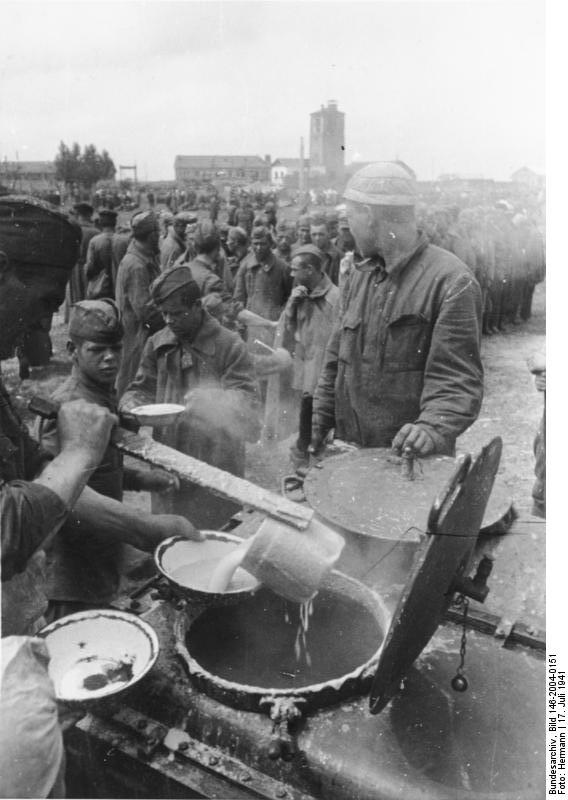 |
| Soviet POWs at a field kitchen at Vitebsk, 17 July 1941 (Hermann, Federal Archive, Bild 146-2004-0151). |
Everybody in the diplomatic corps is present for the afternoon speech, including the United States ambassador, Alexander W. Weddell. Franco makes clear his belief that the Reich is on the march to victory, accuses the British of maintaining an "inhuman blockade of a continent," excoriates the U.S. for not selling food to Spain (a claim of dubious truthfulness), and warns the United States of getting involved in the European conflict:
No one is more authorized than ourselves to say that Europe has no ambition in America. A contest between the two continents is an impossible thing. It would mean only a long war at sea without results; fabulous business for a few and unsuspected miseries for many; prodigious losses of ships and goods; a war of submarines and high-speed vessels striking blows at the hitherto peaceful commerce of the world.He then goes further and adds that "the American coasts are in danger from the attacks of the European powers." He concludes:
The war was badly planned and the Allies have lost it... What is proposed is a new between the continents which by prolonging their agony will give them an appearance of life and in the face of this we who love America feel the anxiety of the moment and pray that the evil of which we have a foreboding may not reach them.Exactly what Franco intends to accomplish with this speech is unclear. However, he gives no indication that he is about to declare war on anybody, and thus, in light of the pro-German tone of the speech, it can be viewed as a continuation of his strategy of placating Hitler while keeping his own distance from the war itself.
 |
| Jewish women being deported in occupied Russia, 17 July 1941 (Federal Archive, B 145 Bild-F016206-0004). |
This includes all important Party and State functionaries and especially so-called professional revolutionaries, all People's Commissioners of the Red Army, leading personalities of the state, all members of Russian intelligence services, and all Jews and other people who are known to be agitators or fanatical communists.Heydrich is not acting alone; he has coordinated his guidelines with General Keitel's OKW, which previously issued orders absolving German soldiers from war crimes on the Eastern Front and mandating the execution of commissars. However, this order goes further, as he states that "all Jews" in the POW camps are to be separated out and executed.
The actual impact of this order is debatable because there is ample evidence that large-scale liquidations of these groups already have been in progress throughout Operation Barbarossa. However, if there is one single order that energizes and encapsulates the Reich's killing machine against "politically intolerant elements," this is it. Previous extermination orders have been only verbal or vague about the treatment of Jews, but this order puts in writing with the full backing of the Reich government the practice of not only abusing Jews but exterminating all male Jews of military service age. It is but a short step from this order to the extermination camps.
At Vilnius, the Einsatzkommando 9 (EK 9, a sub-group of Einsatzgruppe B) continues its liquidations of Jews. It has been shooting about 500 Jews a day int he Panefiai Forest. These will continue for the next two days, and the total number of Jewish men shot will total about 5,000. A unit of EK 9 also is in the process of shooting 527 Jewish men in the Belorussian town of Ashmiany.
 |
| Wendell Willkie at a "Beat Hitler" rally, 17 July 1941. |
Among other little-known facts about DiMaggio's streak is that, after this streak-ending game, DiMaggio immediately embarks upon another 17-game hitting streak. During his 56-game streak, DiMaggio batted .408 with 15 home runs and 55 runs batted in, with the Yankees going 41-13-2 during the streak. For the season DiMaggio is batting .375 before the streak ends, but he trails Boston Red Sox center fielder Ted Williams, who is lurking near .400. Also during the streak, the Yankees went from 5 1/2 games behind the Cleveland Browns to 1st place by 6 games in the American League.
Oh, and one last fact about the streak: the way that it ended cost DiMaggio $10,000. This is because the Heinz Corporation had promised that amount to DiMaggio if he got to 57 games so that he could endorse their Heinz 57 products. However, if you count the 1941 All-Star game held at Briggs Stadium in Detroit, where DiMaggio went 1-4, he actually did hit in 57 consecutive games.
Virginia Woolf's "Between the Acts" is published posthumously. Woolf drowned herself on 28 March 1941 shortly after finishing the novel.
 |
| Joe DiMaggio makes zeroes with his fingers to signify the end of his epic hitting streak, 17 July 1941. |
July 1941
July 1, 1941: US TV Broadcasting Starts
July 2, 1941: MAUD Report
July 3, 1941: Stalin Speaks
July 4, 1941: Pogroms in Eastern Europe
July 5, 1941: Germans on Schedule
July 6, 1941: Australians Attack Damour
July 7, 1941: US Marines in Iceland
July 8, 1941: Flying Fortresses In Action
July 9, 1941: British Take Damour
July 10, 1941: Sword and Scabbard Order
July 11, 1941: Cease-fire in Syria and Lebanon
July 12, 1941: Anglo/Russian Assistance Pact
July 13, 1941: Uprising in Montenegro
July 14, 1941: Katyusha Rocket Launchers in Action
July 15, 1941: Smolensk Falls
July 16, 1941: Stalin's Son Captured
July 17, 1941: Heydrich Orders Mass Executions
July 18, 1941: Twin Pimples Raid
July 19, 1941: V for Victory
July 20, 1941: The Man Who Wouldn't Shoot
July 21, 1941: Moscow in Flames
July 22, 1941: Soviet Generals Executed
July 23, 1941: Secret Plan JB 355
July 24, 1941: Operation Sunrise
July 25, 1941: US Naval Alert
July 26, 1941: Italian E-Boat Attack on Malta
July 27, 1941: MacArthur Returns
July 28, 1941: Auschwitz Exterminations
July 29, 1941: Rescue From Crete
July 30, 1941: Raid on Petsamo and Kirkenes
July 31, 1941: Final Solution Order
2020























